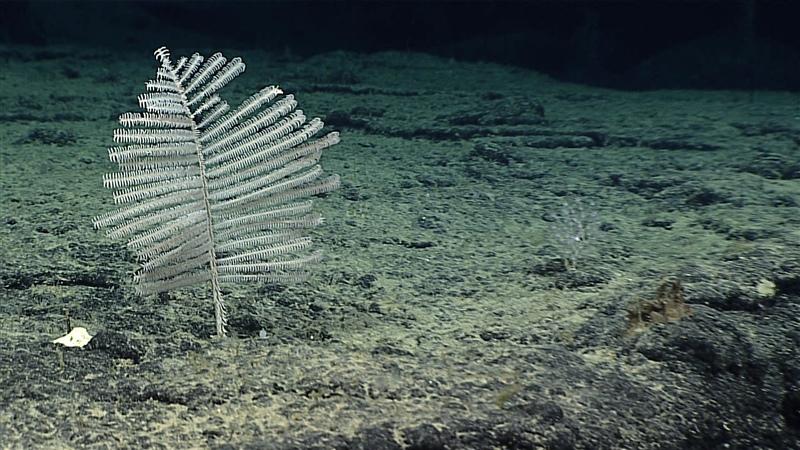By Akancha Singh, Rosie Poulin, and Dan Distel
Last month, an international team of researchers led by OGL collaborator Mercer Brugler from the University of South Carolina published the complete mitochondrial genomes of two deep-sea black corals in ZooKeys1. This study, the first to compare the mitogenomes of two black corals belonging to the same species, provides invaluable insights into these organisms’ genetic diversity and distribution.
Black corals, deep-sea cousins of the more familiar shallow-water reef-forming corals, are often overlooked in the grand scheme of marine life. Nonetheless, they play crucial roles in deep benthic ecosystems. They provide habitat for many organisms, contribute to nutrient cycling, and help maintain overall ecosystem balance. However, their slow growth rates and vulnerability to disturbance make them particularly susceptible to human impacts, including the effects of deep-sea mining.
The vast expanse of the ocean floor hides a treasure trove of minerals such as copper, cobalt, nickel, and rare earth elements. Deep-sea mining involves extracting these valuable resources from depths exceeding 200 meters, often utilizing specialized equipment like remotely operated vehicles (ROVs) and autonomous underwater vehicles (AUVs). While deep-sea mining promises to unlock new sources of vital minerals, it also raises significant environmental concerns.
One of the primary worries is the destruction of fragile ecosystems that thrive in these deep-sea habitats. Studies like the one highlighted in ZooKeys help to reveal the diversity and distribution of deep-sea species. This information is essential for comprehensive environmental assessments that must precede any deep-sea mining activities.

Fig: The image displays an underground black coral species belonging to the family Schizopathidae, Bathypathes cf. alternata with finger-like fronds.
Highlights of the month.
Past OGL co-ops Molly Johnson and Ryan Pianka highlighted innovative methods for preserving DNA in marine tissue samples at the Research, Innovation, and Scholarship Expo hosted by Northeastern University on April 11th. They presented data from OGL’s Student Projects in DNA Preservation, an ongoing series of experiments aiming to improve DNA preservation methods that can be used by scientists across many fields.
1Complete mitochondrial genomes of the black corals Alternatipathes mirabilis Opresko & Molodtsova, 2021 and Parantipathes larix (Esper, 1788)”.
